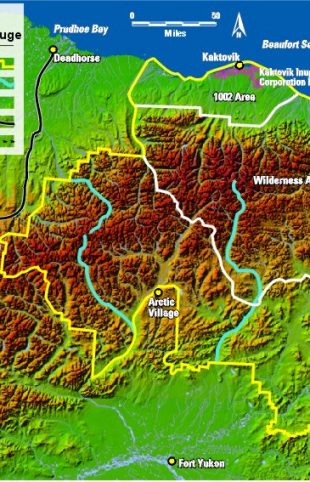
In 1960, Secretary of Interior Fred Seaton of the Eisenhower Administration designated 8.9 million acres of coastal plain and mountains of northeast Alaska as the Arctic National Wildlife Range to protect its “unique wildlife, wilderness and recreation values.” After the discovery of oil in Prudhoe Bay in 1968, pressure mounted to explore for oil in the ANWR. The issue was heavily debated for years in Congress, which culminated in the passage of the Alaska National Interest Lands Conservation Act (ANILCA-1980). In Section 1003 of ANILCA, Congress stated that the “production of oil and gas from the Arctic National Wildlife Refuge is prohibited and no leasing or other development leading to production of oil and gas from the [Refuge] shall be undertaken until authorized by an act of Congress.” Since taking office in 2001, the Bush administration pushed for the opening of the ANWR to exploration and drilling and renewed debate in Congress on the issue. Some legislative events have taken place that made drilling more likely. On March 16, 2005, for instance, the Senate endorsed oil-drilling in the Arctic National Wildlife Refuge through a vote of 51 to 49 for a budget resolution that assumes revenues of roughly $5 billion from drilling fees over the next decade, with the federal government and the state of Alaska to split the money. The Seattle PI wrote, “the [Senate] vote was a major victory for President Bush and his supporters in business and elsewhere who had long advocated drilling in ANWR as a way to ease the nation’s dependence on foreign supplies…Until yesterday, the politics were never good enough to push the bill into law. In some years Democrats successfully blocked ANWR provisions on the Senate floor. In 1996, both the House and Senate approved opening ANWR only to see President Clinton veto it.” Following this, the only measure necessary for drilling to actually take place has been a House and Senate bill that would explicitly open the ANWR to drilling. The Democratic victory in the November 2006 elections, however, may have made this legislative step less likely as the Democrats primarily oppose drilling. The opposition within the Democratic Party, on the other hand, is not a overwhelming majority, and the pro-drilling camp remains very strong in both the Senate and House. The complexity of the issue appears to make the issue less partisan than might be expected of an issue that ostensibly pits corporate and national security interests against environmental concerns.
“1. Only 8% of ANWR Would Be Considered for Exploration Only the 1.5 million acre or 8% on the northern coast of ANWR is being considered for development. The remaining 17.5 million acres or 92% of ANWR will remain permanently closed to any kind of development. If oil is discovered, less than 2000 acres of the over 1.5 million acres of the Coastal Plain would be affected. That¹s less than half of one percent of ANWR that would be affected by production activity.”
“Drilling activity in ANWR would be limited to winter months when wildlife does not frequent the coastal plain” –
“In the North Slope oil fields in Alaska, several hundred spills occur every year and, in some cases, the results can be catastrophic…Spills cause long-term damage to bird populations and habitat.”
“Coastal plain oil development would require a spider’s web of industrial complexes across virtually the entire plain – hundreds of miles of roads and feeder pipelines, refineries, living quarters for hundreds of workers, landfills, water reservoirs, docks and gravel causeways, production plants, gas processing facilities, seawater treatment plants, power plants and gravel mines.”
To access the second half of this Issue Report Login or Buy Issue Report
To access the second half of all Issue Reports Login or Subscribe Now